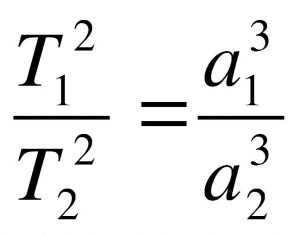The solar system is a collection of planets and other celestial objects that revolve around a central star, the Sun. This system was created when a cloud of gas and dust collapsed under its own gravity approximately 4.57 billion years ago. In this piece, we will explore the planets that make up the solar system, their positions in relation to the Sun, and provide a brief description of each.
A Brief Overview of the Planets in the Solar System
The solar system consists of 8 planets, which are organized based on their distance from the Sun:
- The inner planets, known as the terrestrial group – Mercury, Venus, Earth, and Mars. These planets are primarily made up of silicates and metals.
- The outer planets – Jupiter, Saturn, Uranus, and Neptune, also known as the gas giants. These planets are significantly more massive than the terrestrial group. Jupiter and Saturn, the largest planets in the solar system, are primarily composed of hydrogen and helium. Uranus and Neptune, the smaller gas giants, have atmospheres that also contain methane and carbon monoxide in addition to hydrogen and helium.
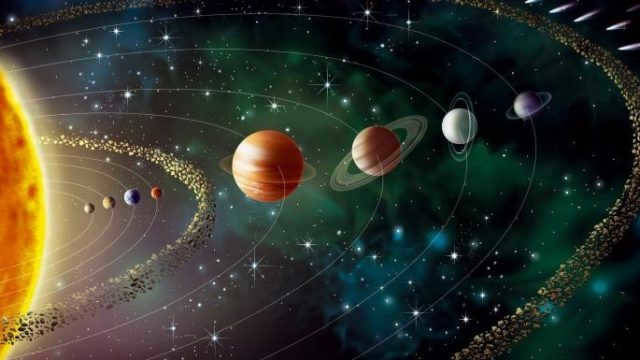
The order of planets in the solar system, starting from the Sun, is as follows: Mercury, Venus, Earth, Mars, Jupiter, Saturn, Uranus, and Neptune. When listing the planets from largest to smallest, this order changes. Jupiter is the largest planet, followed by Saturn, Uranus, Neptune, Earth, Venus, Mars, and finally Mercury.
All the planets in the solar system orbit the Sun in the same direction as the Sun’s rotation (counterclockwise when viewed from the Sun’s north pole).
Mercury has the highest angular velocity – it completes a full revolution around the Sun in just 88 Earth days. On the other hand, the farthest planet, Neptune, has an orbital period of 165 Earth years.
The majority of planets rotate in the same direction as their orbit around the Sun. However, there are two exceptions to this pattern: Venus and Uranus. Uranus has a unique rotation where it almost appears to be “lying on its side” with an axis tilt of approximately 90 degrees.
This information should be considered in conjunction with the following.
Table. Order of the planets in the Solar System and their characteristics.
Planets in the Inner Solar System
The inner planets of the Earth group, consisting of Mercury, Venus, Earth, and Mars, are primarily made up of heavy elements. These planets have a minimal number of satellites and lack any rings. Their composition consists mainly of refractory minerals, such as silicates, that make up their mantle and crust, as well as metals like iron and nickel that form their core. Out of these four planets, Venus, Earth, and Mars have atmospheres.
- Mercury is the smallest planet in the solar system and is located closest to the Sun. It does not have any satellites.
- Venus is similar in size to Earth and shares similarities in its composition, with a thick silicate shell surrounding an iron core and an atmosphere. Due to these similarities, Venus is often referred to as Earth’s “sister” planet. However, Venus has significantly less water compared to Earth and its atmosphere is 90 times denser. Venus also does not have any satellites.
- Venus is known as the hottest planet in our solar system, with a surface temperature that surpasses 400 degrees Celsius. The primary reason for this extreme heat is believed to be the greenhouse effect, which is caused by the planet’s thick atmosphere that is abundant in carbon dioxide.
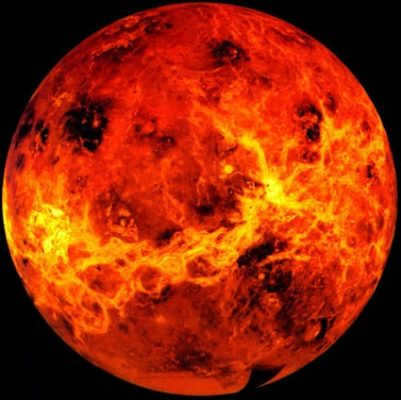
- Our planet, Earth – is the largest and most dense of all the planets in our solar system. The question of whether there is life elsewhere in the universe is still unanswered. Among the planets in our solar system, Earth stands out as unique, primarily because of its vast hydrosphere. The atmosphere of Earth is also quite distinct, as it contains a significant amount of free oxygen. Additionally, Earth has one natural satellite – the Moon. It is the only large satellite among the group of Earth-like planets in our solar system.
- Mars – is smaller in size compared to Earth and Venus. It has an atmosphere mainly composed of carbon dioxide. The surface of Mars is dotted with volcanoes, the largest of which is Olympus Mons, surpassing the size of all volcanoes on Earth, reaching an impressive height of 21.2 km.
The gas giants and their satellites reside in the outer region of the solar system.
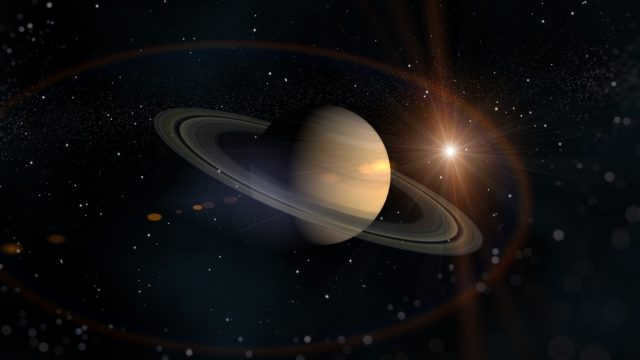
- Jupiter – possesses a mass 318 times greater than that of Earth and 2.5 times greater than the combined mass of all other planets. It is primarily composed of hydrogen and helium. Jupiter has a total of 67 satellites.
- Saturn – This planet is the least dense in our solar system, with an average density lower than that of water. Saturn has a total of 62 satellites.
- Uranus – As the seventh planet from the Sun, Uranus is the lightest among the giant planets. What sets it apart from other planets is its unique rotation pattern, where it rotates “lying on its side” with an axis inclination of approximately 98 degrees to the ecliptic plane. Uranus has a total of 27 satellites.
- Neptune is the final celestial body in our solar system. Despite being slightly smaller than Uranus, it boasts a greater mass, making it denser. This enigmatic planet is accompanied by a retinue of 14 known satellites.
What did we learn?
Astronomy offers many intriguing subjects to explore, and one of them is the composition of the solar system. Throughout our studies, we have delved into the various celestial bodies that make up the solar system, including the planets. We have gained knowledge about their names, their sequential arrangement from the Sun, and their unique attributes and concise descriptions. This captivating information is not only engaging for individuals of all ages but also serves as a valuable educational resource, particularly for students in the 4th grade.

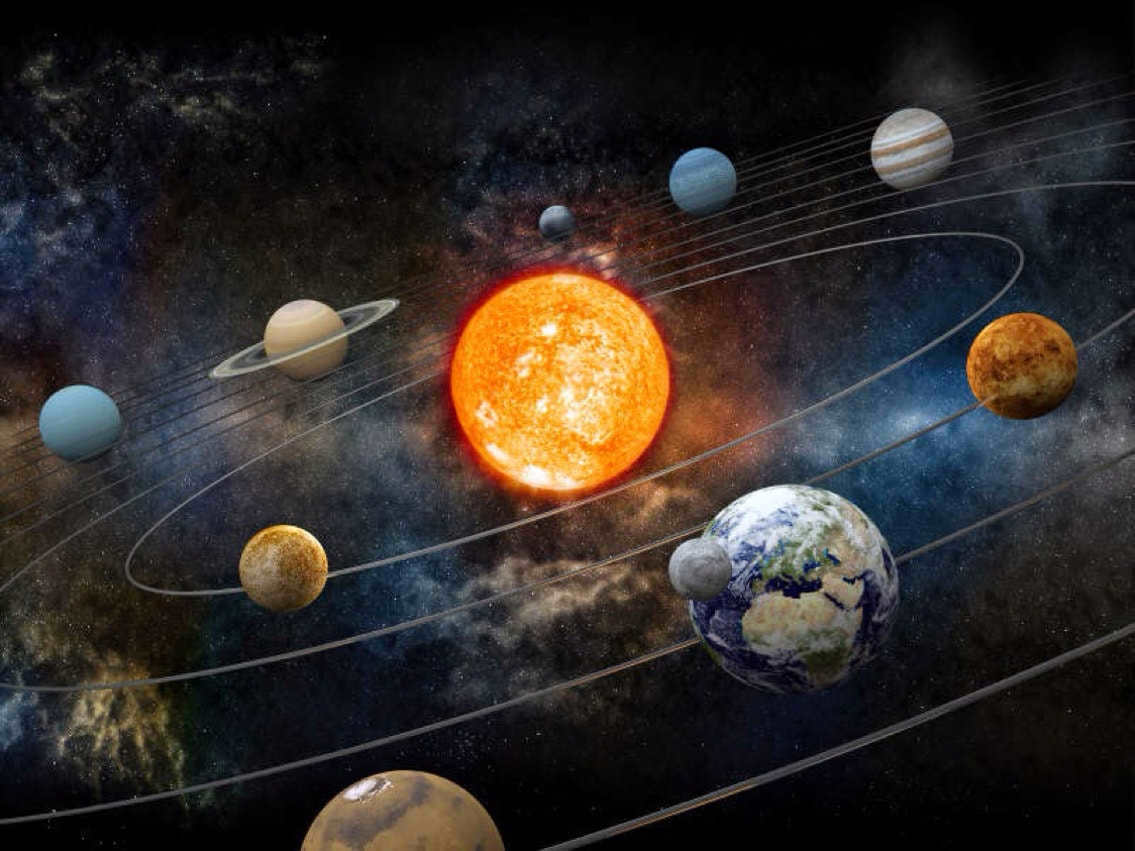
Universe
The solar system’s design demonstrates that all of its planets’ orbits lie in the same plane. Given the vastness of outer space, one might wonder why the planets move along such predictable paths instead of orbiting the Sun in a haphazard manner.
The birth of the solar system
The knowledge accumulated over numerous years permits scientists to merely speculate on the origins of the solar system. The prevailing nebular theory suggests that the Sun and the planets formed from a molecular cloud. This dense cloud experienced a sudden compression due to the force of gravity.
The solar system is estimated to be 4.6 billion years old. Initially, the Sun was created in the central region of a gas-dust cloud. Surrounding the Sun was a protoplanetary disk that formed from the material outside the central area. Over time, various celestial bodies, including planets and satellites, emerged from this disk.
Scientists believe that the cloud itself may have formed after the explosion of a supernova star, known as Coatlicue, with a mass equivalent to 30 suns. The solar system then underwent further evolution.
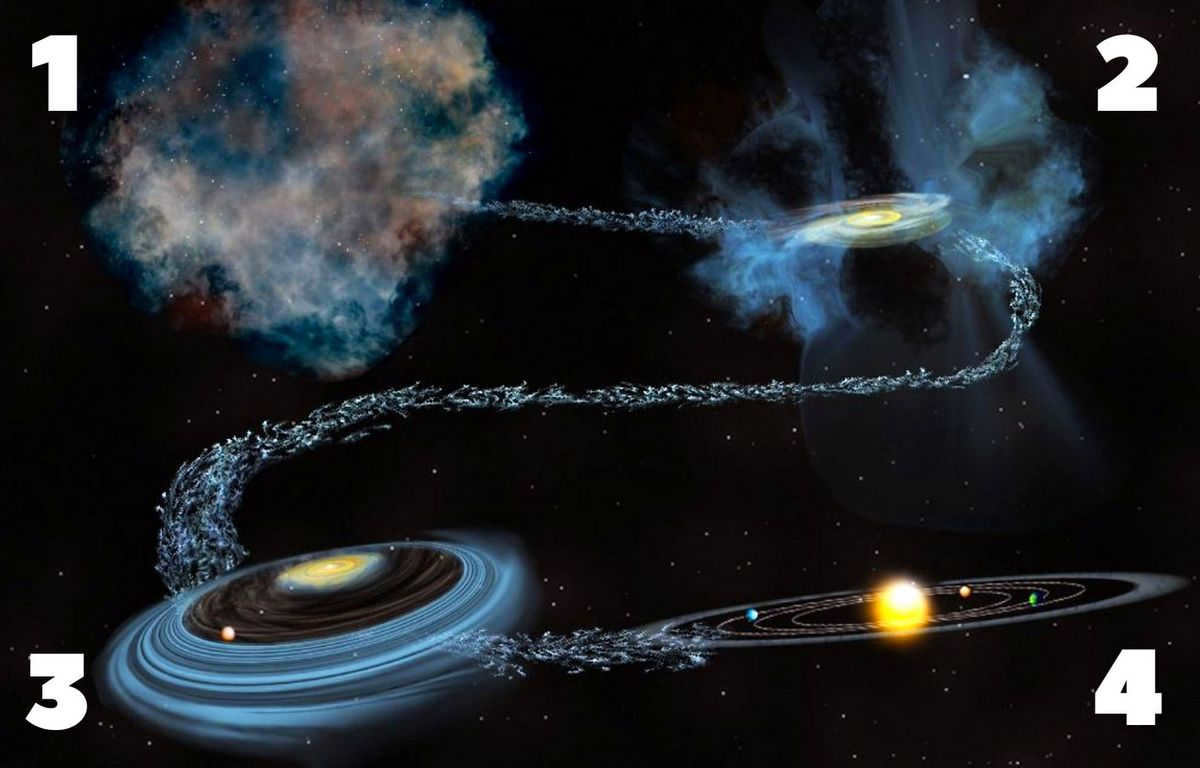
The nebular hypothesis originated in the 18th century. It was proposed by Swedenborg and Laplace, along with philosopher Kant. To this day, this theory is being tested and refined based on new evidence.
In the early 21st century, scientists have radically altered their understanding of the early solar system. Previously, it was believed that nothing had changed for billions of years. However, new ideas have made it more complex.
What is the composition of the Solar System?
According to the contemporary perspective, the Solar System consists of the central star, accompanied by various celestial bodies that revolve around it. The total mass of the system is 1.0014 M☉ (a specialized unit of measurement utilized in the field of astronomy).
The majority of this mass is comprised of the Sun, while the remaining portion is accounted for by the planets within the system. There are a total of eight planets in the Solar System. It is divided into two regions: the inner region comprises the nearby planets Mercury, Venus, Earth, and Mars, whereas the outer region encompasses Jupiter, Saturn, Uranus, and Neptune.
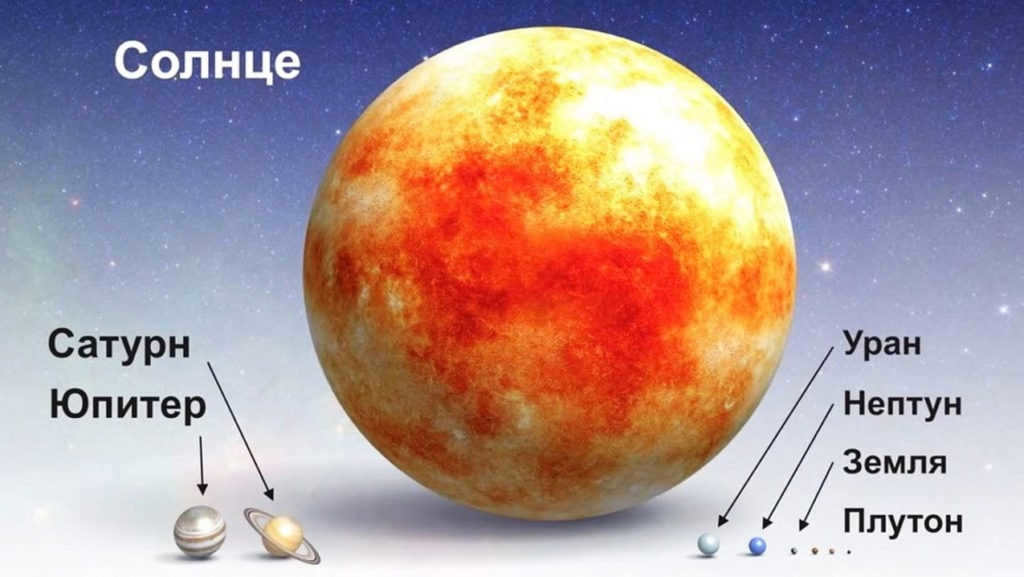
What is the movement of the planets and the Sun like?
The planets within our solar system are separated by vast distances and follow specific paths known as orbits. These orbits are shaped like elongated circles and are generally situated within the same plane known as the ecliptic plane.
The Sun, on the other hand, moves along the ecliptic, which is a great circle on the celestial sphere. This movement can be observed from Earth over the course of a year. The Sun completes a full revolution in a sideric year, which is approximately 365.2564 days.
Did you know? All the planets in our solar system rotate in the same direction as the Sun. From the perspective of the North Pole, this rotation is counterclockwise. With the exception of Venus and Uranus, the other six planets also rotate counterclockwise on their own axes.
The issue of the planets’ positioning is directly linked to the theory surrounding the development of the solar system. This is a rather intricate matter, particularly since scientists are limited to modeling and simulating this process. It is important to note that, in reality, the orbits are nearly coplanar, as they exhibit a slight deviation.
The likely explanation for this alignment is that the planets within the solar system formed within a singular protoplanetary disk. In other words, they originated from the same material. As the central star was forming, particles outside of it continued to move and rotate in a chaotic manner, but they were influenced by a shared center of mass. Consequently, the rotation of the Sun created a unified plane of rotation for the planets.
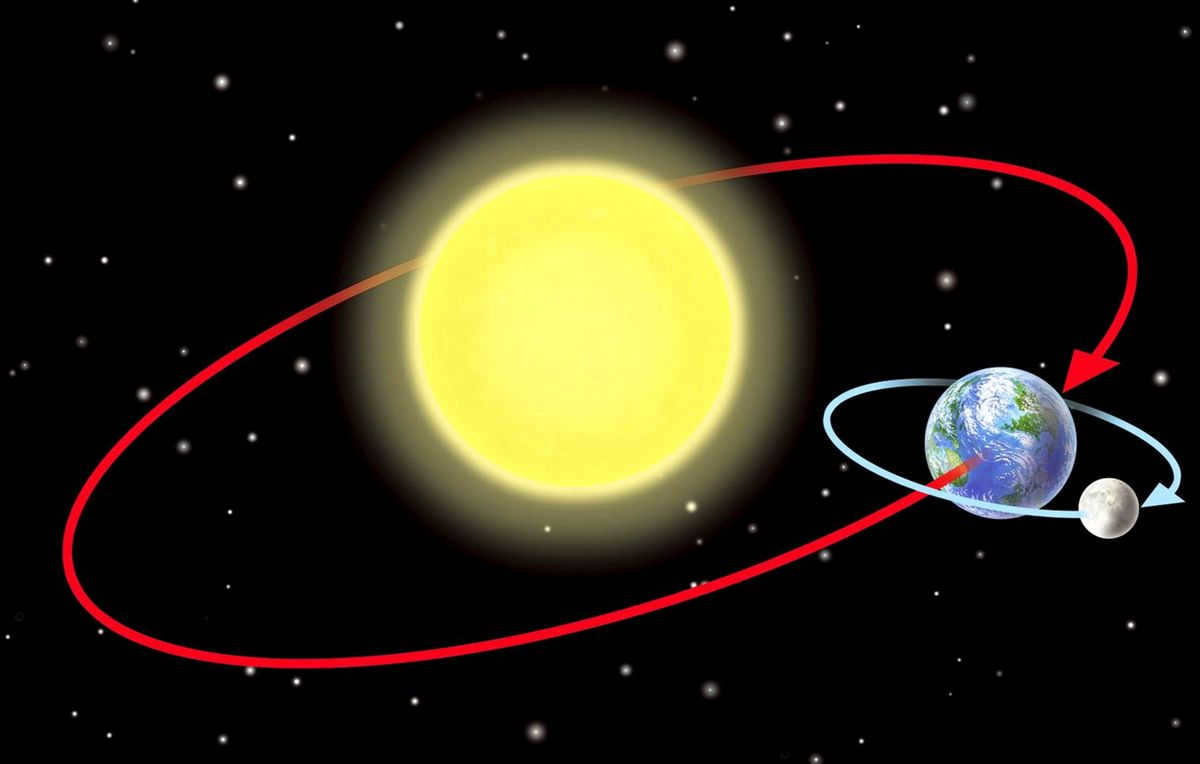
Based on the principles of the Law of Universal Gravitation, the planets orbit around the Sun due to its significantly larger mass. As a result, the solar system maintains its stability, preventing the planets from drifting away into space.
A team of scientists has successfully identified a young star called HL Taurus, estimated to be approximately 100,000 years old. Situated at a distance of 450 light years from Earth, this star is accompanied by a protoplanetary disk and a recently formed planet, which is believed to be no more than 2000 years old. Notably, the disk contains clusters of gas that have the potential to develop into planets in the future.
This discovery presents a unique opportunity for scientists to observe the birth of a new star system and, using the data collected, to expand our understanding of how our own solar system formed.
The alignment of the planets’ orbits in a single plane can be explained by the nebular theory of solar system formation. According to this theory, the Sun formed from the rapid compression of a cloud of gas and dust. In the center of this cloud, a star was born, surrounded by a protoplanetary disk. Over time, planets formed from this disk, essentially emerging from the same material. The planets do not escape into space, but instead orbit the Sun in elliptical paths due to the force of gravity (with the Sun accounting for 99% of the system’s mass).
Fascinating video showcasing the planetary orbits
In case you stumble upon any inaccuracies, kindly select the problematic text and hit Ctrl+Enter.
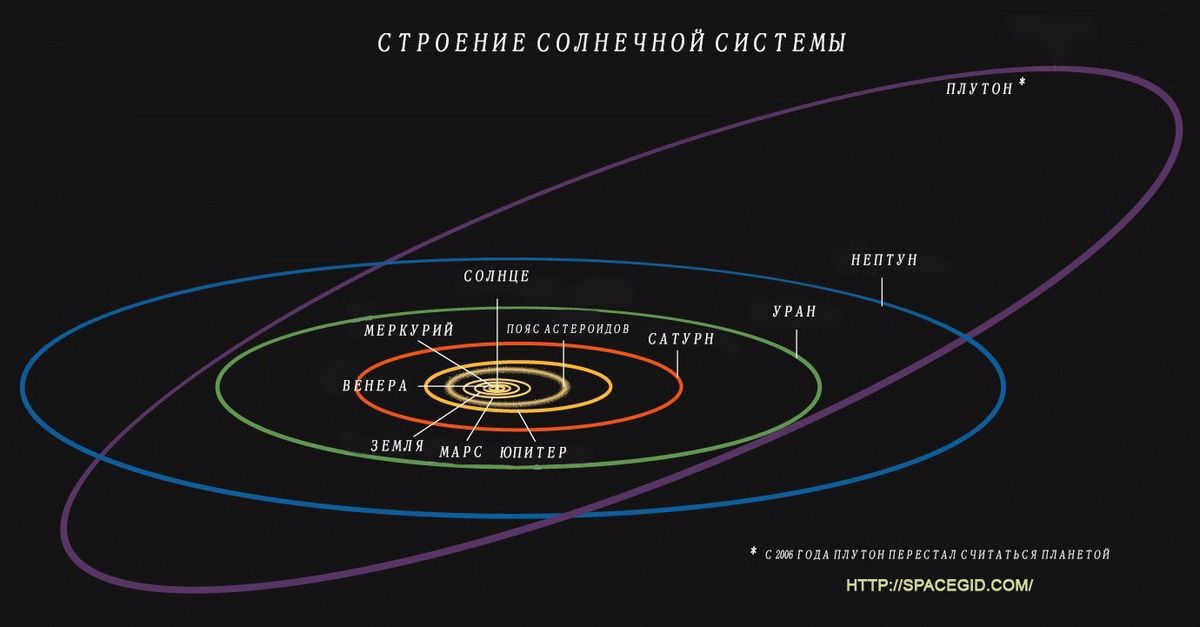
According to the definition, a star is a celestial object that orbits around a planet. The orbit, on the other hand, refers to the path that the planet takes within the gravitational field of another object, typically a star. In the case of our planet, the Sun serves as this object.
All of the planets in our Solar System follow their respective orbits in the same direction as the Sun’s rotation. However, there is one known exception – an exoplanet named WASP-17b, which is located in the Scorpius constellation and moves in the opposite direction.
Length of Planetary Year
The planetary year, also known as the sideric rotation period, refers to the time it takes for a planet to complete one orbit around its star. The velocity of the planet is influenced by its distance from the star, with closer proximity resulting in higher speeds and greater distances resulting in slower movement. As a result, the length of a planet’s year is directly affected by its distance from its “Sun”. A smaller distance corresponds to a shorter planetary year, while a greater distance leads to a longer year. This is due to the decreased gravitational pull on the planet as it moves farther away from the star, resulting in slower movement and a longer year.
Perihelion, aphelion, and eccentricity explained
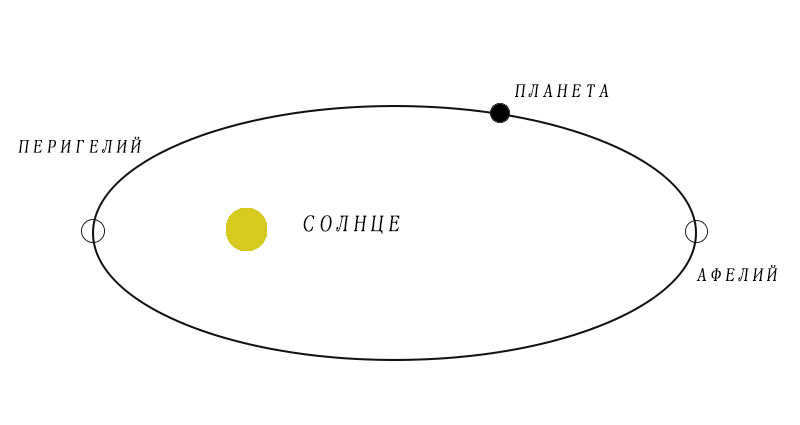
All planets in the solar system revolve around the Sun in orbits that resemble elongated circles. The degree of elongation is determined by the eccentricity of each planet’s orbit. When the eccentricity is close to zero, the orbit is almost circular. On the other hand, if the eccentricity is close to one, the orbit takes the shape of an ellipse. For instance, many satellites and exoplanets in the Kuiper belt have elliptical orbits, while the planets in our solar system have nearly perfect circular orbits.
The phenomenon accountable for the alteration of the seasons.
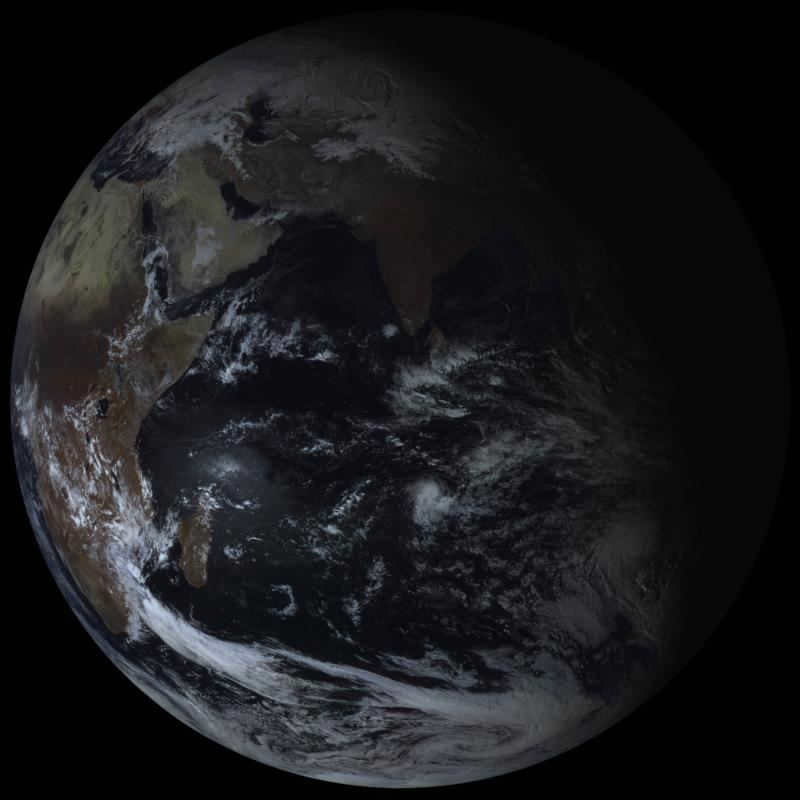
View of the Earth from the Electro-L satellite
The inclination of an orbit is determined by the angle between the orbital plane and the reference plane. In the Solar System, the reference plane is defined as the plane of the Earth’s orbit, known as the ecliptic. The orbits of the eight planets in our solar system are closely aligned with the ecliptic plane.
All of the planets in our solar system have an inclination relative to the equatorial plane of their respective stars. For instance, the Earth has an axial tilt of approximately 23 degrees. This tilt affects the amount of sunlight each hemisphere receives and is responsible for the changing of seasons.
Witness the mesmerizing transition between day and night as seen through the lens of the Electro-L satellite
The solar system is made up of the Sun and a group of planets. The planetary system consists of all the objects that orbit the Sun, including planets, dwarf planets, moons, asteroids, meteorites, comets, and space debris. The planets in our solar system are a realm that remains largely unexplored, captivating people around the world and sparking the curiosity of both young children and brilliant minds. This article provides an overview of the key information that scientists have gathered so far.
Smaller objects in the solar system include:
- Asteroids,
- Kuiper belt objects (such as Quavar and Ixion),
- Dwarf planets (such as Ceres, Pluto, and Erid),
- Oort cloud objects (such as Sedna and Orcus),
- Comets (such as Halley’s Comet),
- Meteoroids.
The Earth-group planets, consisting of Mercury, Venus, Earth, and Mars (in order of their proximity to the Sun), are commonly recognized as such. These four planets orbit within the vicinity of the Main Asteroid Belt. They share a common bond due to their comparable physical characteristics: relatively small sizes and masses, average densities several times that of water, slow rotational speeds, and a scarcity or absence of satellites (excluding Earth with one, Mars with two, and Mercury and Venus with none).
Earth-like planets or clusters of planets vary from the massive planets in terms of their smaller size, lesser mass, higher density, slower rotation, and significantly thinner atmospheres (Mercury has practically no atmosphere, resulting in scorching temperatures on its daytime side. The terrestrial planets experience much higher temperatures compared to the giants (reaching up to 500 degrees Celsius on Venus). The elemental compositions of the Earth-like planets and the giant planets also exhibit clear differences. Jupiter and Saturn primarily consist of hydrogen and helium, in a similar proportion to that of the Sun. Earth-like planets, on the other hand, contain numerous heavy elements. The Earth is predominantly composed of iron (35%), oxygen (29%), and silicon (15%). The most prevalent compounds in the Earth’s crust are aluminum and silicon oxides. Therefore, the elemental composition of the Earth greatly differs from that of the Sun.
What are some massive planets?
There are several massive planets in the solar system, including Jupiter, Saturn, Uranus, and Neptune. These planets are known as giants due to their enormous size and low density, primarily composed of hydrogen and helium gases. Surprisingly, the total mass of these giant planets accounts for approximately 98% of the entire mass in our solar system! Interestingly, both Jupiter and Saturn emit slightly more heat from their cores than they receive from the Sun, whereas the Earth’s core releases negligible heat compared to the solar energy it receives. Another intriguing fact is that Neptune and Uranus, being the farthest planets from the Sun, contain significant amounts of ice, earning them the title of ice giants.

Planets of this category possess a significant quantity of moons, in contrast to the rocky planets, and they exhibit a rapid rotational speed. Moons are diminutive objects that revolve around the planets. The space amidst the planets is replete with minute solid particles and sparse gases.
Our planet is known as Earth
Earth revolves around the Sun in an elliptical (nearly circular) path. Its average velocity is 29.765 kilometers per second. At its farthest point from the Sun (aphelion), it travels at a speed of 29.27 kilometers per second, while at its closest point (perihelion), it reaches a velocity of 30.27 kilometers per second. In order to complete one full orbit around the Sun and return to its starting point, our blue planet must travel a staggering distance of 939.1 million kilometers. It accomplishes this incredible journey in just 365.26 solar days. The time it takes for a celestial satellite to complete a full revolution around its main body, known as the sideric period or year, is equivalent to this duration.
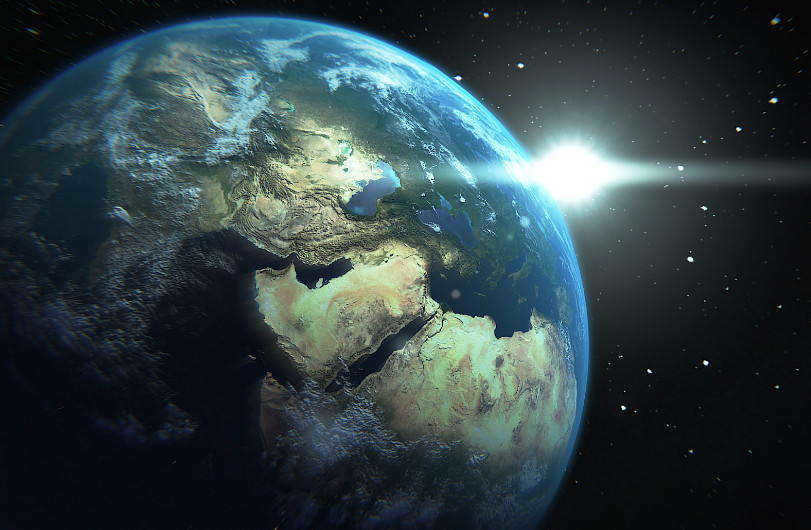
The Earth’s distance from the Sun is approximately 152.083 million kilometers at aphelion and 147.117 million kilometers at perihelion. The orbit’s major semi-major axis measures 149.6 million kilometers. This measurement, known as the astronomical unit (a.e.), has long been used as the fundamental unit of distance in the solar system. Distances between planets are measured in a.e., which provides a visual representation of their distance from the Sun and Earth.
Based on extensive scientific research and data, it is estimated that the planet formed from the Solar Nebula approximately 4.54 billion years ago. Shortly after, it acquired its natural satellite, the Moon. Life on Earth is believed to have emerged around 3.5 billion years ago.
The creation of our planet’s oceans was a result of comet bombardment, and the impact of asteroids on Earth’s surface also played a significant role in shaping the environment. The extinction of numerous ancient life forms that once inhabited our planet can be attributed to the effects of these asteroids.
Planets Similar to Earth
Planets similar to Earth are given this name due to their physical characteristics closely resembling those of our planet. These planets have a solid surface and a relatively high average density, which decreases as you move farther away from the Sun, ranging from 5.43 grams per cubic centimeter for Mercury to 3.94 grams per cubic centimeter for Mars. During the formation of these Earth-like planets, their proximity to the Sun prevented the retention of significant amounts of volatile elements such as hydrogen, helium, and water in the “source material” or the gas-dust nebula.
Mercury
Mercury is the tiniest of all the terrestrial planets. It measures 4880 km in diameter, which is approximately 0.383 times the diameter of Earth. With a mass of 0.056 times that of Earth, it also has an average density of 5420 kg/m^3, which is similar to Earth’s.
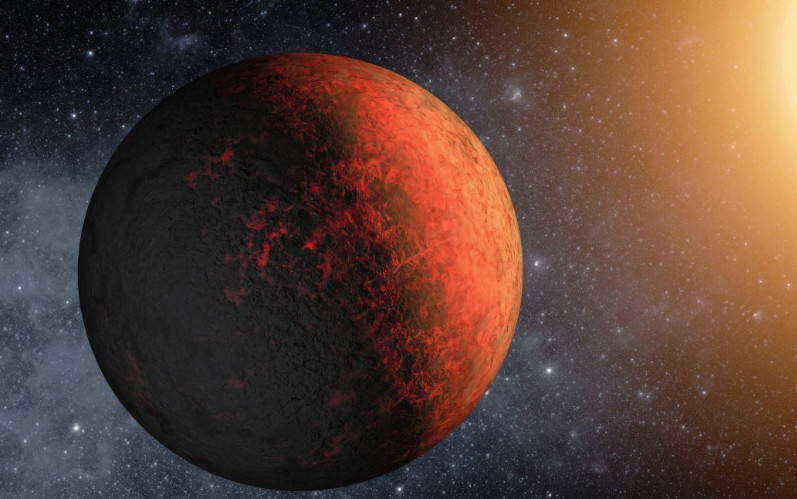
Mercury travels around the Sun at an average velocity of 47.9 km/sec and completes one orbit in 87.97 Earth days. As for its rotation, the planet spins slowly enough that it takes approximately three rotations for every two orbits around the Sun, which amounts to 58.65 Earth days.
Out of all the planets in the solar system, Mercury has the largest orbital eccentricity, measuring at 0.206.
When photographed in 2008 by the Messenger Automated Interplanetary Station (AMS) from a distance of 27,000 km, Mercury appeared strikingly similar to the Moon.
The atmosphere of Mercury is unique, primarily composed of oxygen, sodium, and helium. Due to the planet’s high temperature, atmospheric atoms constantly escape into space, but they are also replenished by atoms carried in by the solar wind.
Due to the extremely strong rarefaction, the concept of Mercury’s atmosphere is quite conventional, with Mercury’s atmospheric pressure being 500,000,000,000,000 times lower than that of Earth, which is comparable to a regular vacuum. The distinct phases of the planet, clear surface relief, and pronounced shadows from the mountains also provide evidence of the lack of an atmosphere on Mercury.
In 1991, astronomers made a groundbreaking discovery of water ice on the planet, specifically located at the poles of the planet where deep craters shield it from direct sunlight.
A single solar day on Mercury spans 176 Earth days, equivalent to two years on Mercury!
Venus
Venus is the hottest planet in our solar system. It has an incredibly high surface temperature that can reach up to 480 °C. In terms of mass, Venus is 0.815 times the mass of Earth, and its radius is 0.950 times the radius of Earth, measuring at 6050 km. The average density of Venus is around 5240 kg/m 3 .
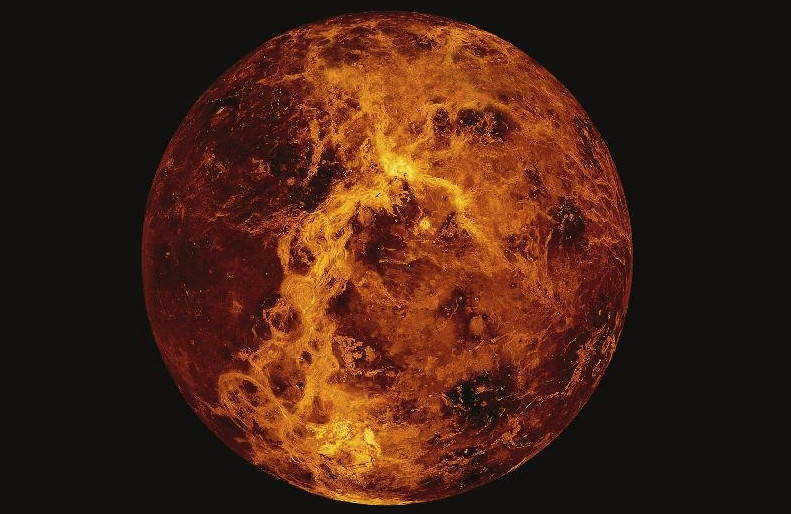
Just like Mercury, Venus does not have any natural satellites.
Due to its close proximity to both the Sun and Earth, Venus is the third brightest object in the sky, following the Sun and the Moon.
Venus rotates in the opposite direction of its orbit around the Sun, with a rotation period of 243 Earth days. It takes Venus 225 Earth days to complete one orbit around the Sun, meaning that a day on Venus is longer than a year.
The acceleration of free fall on Venus is 0.9 times that of Earth and is approximately 8.8m/s 2 .
The composition of Venus’ atmosphere is primarily carbon dioxide, making up 96% of the total mixture. Nitrogen accounts for 3.5% of the atmosphere, while the remaining gases make up less than half a percent. The surface of Venus experiences extreme pressure, measuring nearly 90 atmospheres, and is accompanied by scorching temperatures of around 500°C. Approximately 50-60 km above the planet’s surface, a dense layer of clouds envelops Venus, obscuring our view. These clouds are composed of minuscule droplets containing sulfuric and hydrochloric acids.
The presence of carbon dioxide in the atmosphere of Venus is responsible for the creation of a powerful greenhouse effect on the planet. Sunlight is able to penetrate the atmosphere and heat the surface of Venus during its long day, but the thermal radiation emitted by the surface is unable to escape into space due to the limited transmission capabilities of carbon dioxide. As a result, the surface and lower atmosphere of Venus experience extremely high temperatures.
The dense cloud cover surrounding Venus makes it difficult to observe the planet’s surface using optical methods from Earth. Therefore, the majority of our knowledge about the physical characteristics of Venus has been obtained through the use of radar techniques and space exploration.
The first spacecraft to venture to Venus was the AMS Venera-1, which launched from Baikonur on February 12, 1961.
Venus is situated close to the Sun, resulting in a twofold increase in the amount of energy it receives per unit of surface area. The main factor contributing to its high surface temperature is the presence of a strong greenhouse effect. In terms of brightness, Venus outshines all visible stars except for the Sun and the Moon. Interestingly, this planet lacks any natural satellites and has very few craters.
Mars
The telescopic observation of Mars and the utilization of space stations and rovers have provided a clear view of the planet’s surface, enabling a thorough examination of its topography. This has facilitated the measurement of its angular dimensions with a relatively high degree of accuracy, allowing for the calculation of its linear diameter, which is 6800 km or 0.533 times the diameter of Earth. The mass of Mars is equivalent to 0.107 times the mass of Earth. Furthermore, the average density of Mars’ matter is 3950 kg/m3, amounting to 0.72 times the density of Earth. Mars is often referred to as the “red planet” due to the reddish tint of its surface caused by the presence of iron oxide.
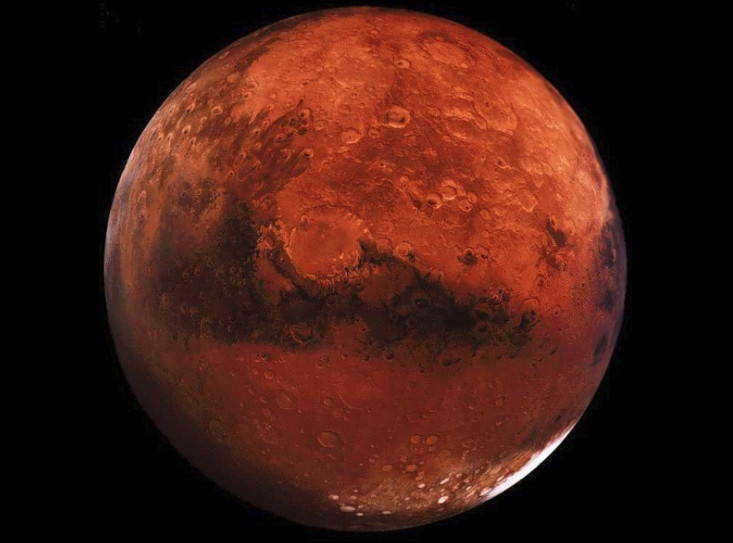
The axial rotation of Mars is direct, completing one full rotation in 24 hours, 37 minutes, and 23 seconds (known as a Martian sidereal day). This determines the length of a Martian solar day, which lasts 24 hours, 39 minutes, and 29 seconds. Interestingly, this is slightly longer than Earth’s solar day by only 39.5 minutes. The tilt of Mars’ rotation axis is approximately 24 degrees and 56 minutes, which is similar to Earth’s tilt of 23 degrees and 26 minutes.
Just like Earth, Mars experiences distinct climate zones due to its axial tilt. There are two hot belts, two temperate belts, and two cold belts. Additionally, Mars goes through seasonal changes, with each season lasting nearly twice as long as Earth’s seasons. This is because a Martian year is equivalent to 687 Earth days.
However, the seasons on Mars differ from those on Earth. Mars is 1.52 times farther away from the Sun, resulting in 2.3 times less heat. Furthermore, Mars lacks large bodies of water, so it does not experience snowy winters or hot summers like Earth does.
The average yearly temperature on Mars is approximately -70 °C. However, near the equator, it can reach +20…+25 ° C during the day, dropping to -10 ° C and below at sunset, and plummeting to -90 ° C in the morning. These extreme temperature changes are a result of the extremely thin atmosphere, which is unable to retain the heat absorbed by the planet’s surface during the day and quickly dissipates it into outer space at night.
The atmosphere of the planet consists of about 95% carbon dioxide, approximately 2% nitrogen, 0.3% oxygen, and roughly 0.01% water vapor. At the surface, the density and pressure of the atmosphere are equivalent to those found in Earth’s atmosphere at an altitude of 30 kilometers. These conditions make it impossible for water to exist in a liquid state. However, the presence of features resembling dried-up riverbeds on the planet’s surface suggests that Mars may have had a dense atmosphere and water in the distant past. And where there was water, there is a possibility of life.
Currently, multiple Mars rovers are conducting explorations on the planet’s surface with the hope of discovering definitive evidence of water and signs of life. The polar ice caps, composed of carbon dioxide and water ice, are still awaiting further investigation. They expand during winter and shrink during summer.
Mars possesses two natural satellites, Phobos and Deimos, which can only be observed through powerful telescopes. Space stations have captured images of both satellites, revealing their amorphous shapes measuring 27×21×19 km (Phobos) and 15×12×8 km (Deimos), resembling asteroids. The surface of these satellites is marked with craters ranging in diameter from 50 m to 10 km, undoubtedly the result of meteoric impacts, as volcanic activity is impossible on such small celestial bodies.
It is beyond Mars that the asteroid belt commences, composed of space debris, effectively separating the terrestrial-type inner planets from the distant gas giants.
The Enormous Planets
Positioned beyond the asteroid belt, Jupiter, Saturn, Uranus, and Neptune are classified as enormous planets. They have a significantly greater size and mass compared to the planets in the Earth group, and they also possess numerous satellites that revolve around them. Additionally, these colossal planets are encircled by bands composed of tiny particles. Saturn stands out with its exceptionally broad rings.
The vast atmospheres of the colossal planets are primarily composed of hydrogen and helium. These planets lack a solid surface. What we observe are the upper regions of clouds floating within the atmosphere. The hues of the clouds are determined by the presence of impurities such as ammonia transformations, methane, and so on. Beneath the atmosphere of the colossal planets lies a layer of liquid hydrogen, followed by a unique gas-liquid state, and then the shell commences, where hydrogen transitions into a metallic form. At the very core resides a solid nucleus.
An intriguing characteristic of the colossal planets’ rotation on their axes is that they rotate in tiers: the layer of the planet closest to the equator spins faster than the other layers.
Jupiter
Let’s begin with Jupiter, the planet with the greatest mass, a formidable atmosphere, and the swiftest rotation speed. It holds the title for being the largest planet in our solar system, with a mass nearly 2.5 times that of all the other planets combined and 318 times the mass of Earth. The visible disk of Jupiter consists of the outer layers of its expansive atmosphere.
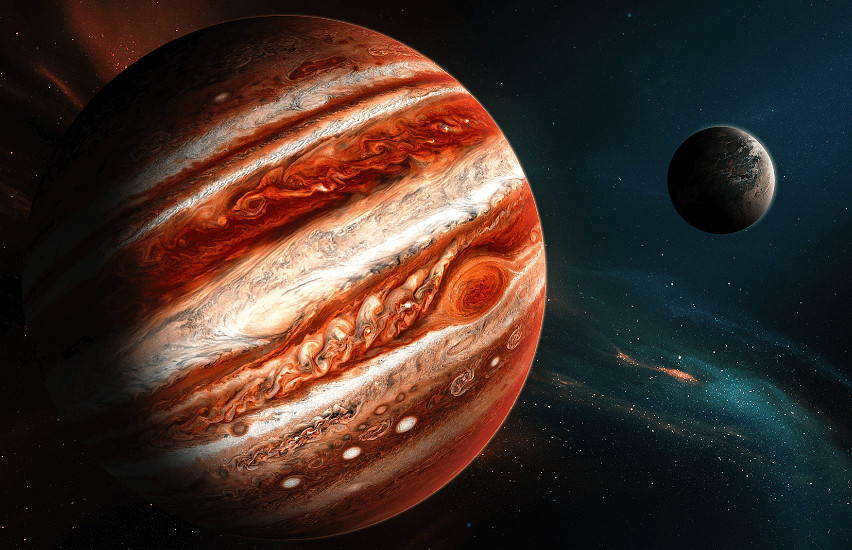
Jupiter rotates at a high speed around its axis, with every point on its equator moving at a staggering velocity of 45,000 kilometers per hour. As a result of the centrifugal forces acting on it, Jupiter appears noticeably flattened, with a compression ratio exceeding 6%. The atmospheres of Jupiter and other gas giants are characterized by the presence of high-speed winds that blow in wide bands parallel to the planet’s equator. On Jupiter, these winds blow in opposite directions in adjacent bands. Even with a modest telescope, these bands can be observed and they are in constant motion. In the tropics of Jupiter, wind speeds can reach up to 660 km/h.
The equatorial radius of Jupiter measures 71,400 km, which is 11.2 times larger than the radius of the Earth. The acceleration due to gravity on Jupiter is 2.67 times stronger than on Earth.
Based on current understanding, Jupiter is made up of approximately 74% hydrogen, 20% helium, and 6% heavier elements in its interior.
Jupiter possesses a system of rings, although they are notably less prominent than Saturn’s rings. The planet is characterized by turbulent winds, and its most notable feature is the Great Red Spot, a powerful storm that has been active for 400 years. Jupiter is the fourth brightest object in the sky, trailing only the Sun, Moon, and Venus.
Jupiter is orbited by a significant number of moons, with four of them – Io, Europa, Ganymede, and Callisto (known as the Galilean moons) – being the largest and comparable in size to the Moon. These moons can be easily observed even with binoculars. The remaining moons vary in size from 10 to 280 km and have irregular shapes.
The surface of Io, one of Jupiter’s moons, is truly unique. It is covered in the aftermath of volcanic eruptions, giving it a distinct metallic sheen. Over the years, multiple volcanic eruptions have been observed on this fascinating satellite.
Europa, another moon of Jupiter, presents a vastly different landscape. Its surface is characterized by massive rifts and relatively flat areas, suggesting the presence of an icy crust. Scientists believe that beneath this icy surface lies a massive ocean, estimated to be tens of kilometers deep. The presence of water offers a glimmer of hope for the existence of simple life forms. Consequently, there is growing interest in planning an expedition to Europa to explore the possibility of life thriving in its hidden ocean.
Saturn
Saturn, with its massive ring system, bears a stronger resemblance to Jupiter than any other gas giant. It boasts a mass that is 95 times that of Earth and an equatorial radius of 60,370 km, which is 9.5 times the radius of our own planet. The gravitational pull on Saturn is 1.15 times stronger than on Earth. When it comes to sheer beauty and spectacle, Saturn takes the crown among all other planets. Its vibrant yellow hue and iconic rings make it a captivating sight for both experts and amateurs alike. With its status as the second largest planet in our solar system, Saturn can be observed with just a small telescope or even binoculars. The planet is also accompanied by 18 satellites that orbit around it.
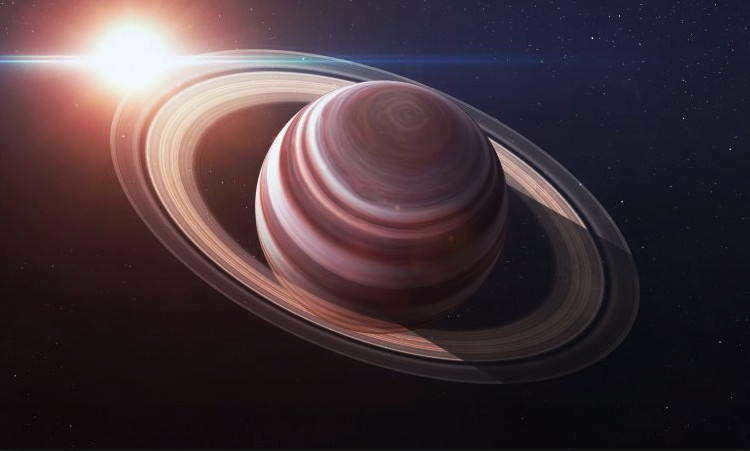
The composition of Saturn’s atmosphere is primarily hydrogen (96%), helium (3%), and methane gas (0.4%). The temperature remains low and the pressure is elevated for hundreds of kilometers deep into the atmosphere, which causes ammonia to condense into visible whitish clouds.
Research has indicated that Saturn, similar to Jupiter, emits more energy than it receives from the Sun, with a ratio of two to one.
Why are Saturn’s rings vanishing? As Saturn completes two orbits of its rings in one revolution around the Sun, the edge of the rings is turned towards Earth. However, due to their thinness, they are difficult to observe even with telescopes.
Saturn’s composition mirrors that of Jupiter, with a similar rotational pattern as a gaseous entity. The equatorial belt completes a rotation in approximately 10 hours and 14 minutes, while the temperate belts take about 10 hours and 39 minutes. The average density of Saturn is recorded at 690 kg/m3.
Among Saturn’s many satellites, their sizes range from 34 to 5150 km in diameter.
One notable satellite, Titan, can be observed using school-type telescopes. It surpasses the Moon in diameter by about one and a half times, encompassed by a dense nitrogen atmosphere. Titan orbits Saturn at an average distance of 1,221,900 km, completing a full revolution in 15 days, 22 hours, and 48 minutes. Notably, the Cassini space station’s landing module discovered lakes and rivers composed of liquid nitrogen and methane on Titan’s surface.
Saturn possesses a remarkable feature – a ring, which was first observed in 1657 by the Dutch physicist H. Huygens. It was later revealed that the ring is not just one, but actually consists of seven thin, flat, concentric rings that are separated by dark gaps. These rings encircle the planet in the same plane as its equator, and collectively, they have a width that spans several thousand kilometers.
When viewed through small telescopes, only two of these rings and a dark gap between them, known as the Cassini gap (named after the French astronomer D. Cassini who discovered it in 1675), are visible. These rings are not solid structures, but rather, they are composed of countless solid debris of varying sizes (such as stone and ice) – ranging from a few centimeters to several tens of meters. Similar to miniature satellites, these debris orbit around the planet. Despite the grand scale of this ring system, its thickness is surprisingly thin, measuring no more than two kilometers.
Uranus
Continuing our journey away from the Sun, we encountered Uranus, the seventh planet in our solar system. This mesmerizing celestial body is known for its icy surface and captivating blue radiance.
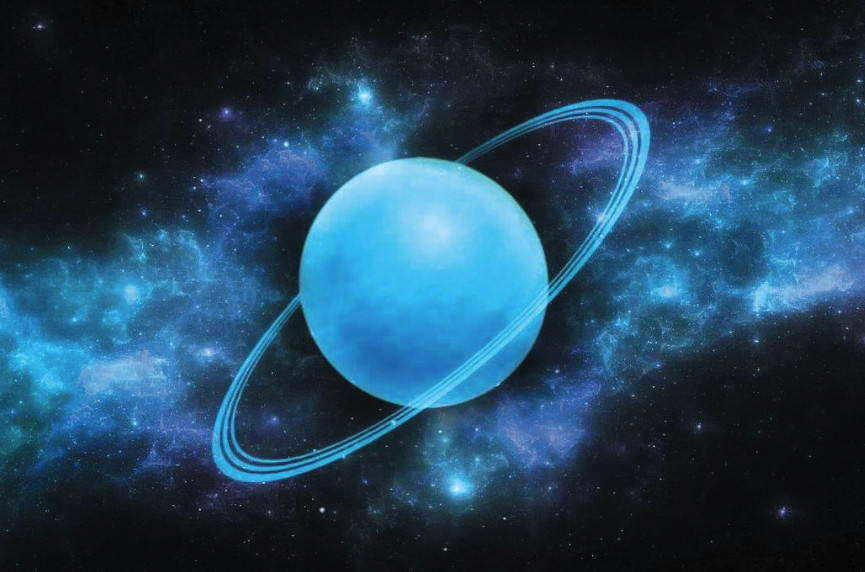
Despite being the third largest planet in our solar system, Uranus is located so far away from Earth that it is nearly impossible to observe without the aid of technology. It can be faintly glimpsed as a tiny star, but pinpointing its exact location at any given time is a challenge. To get a better view of Uranus, binoculars are necessary, and even better would be a telescope with a 60-fold magnification, which would allow for the observation of its small disk rather than just a bright point of light.
In ancient Greek mythology, Uranus was a revered deity associated with the heavens. He was considered the supreme god and the father of Chronos (Saturn), the Cyclops, and the Titans, who would later become the precursors of the Olympic gods.
Due to the challenging nature of observation, Uranus was only officially identified two centuries ago (in 1781) by the renowned English astronomer William Herschel. This discovery is relatively recent when compared to the planets that are closer to Earth, as they are visible to the naked eye and have been known to humans for millennia. Uranus holds the distinction of being the first planet discovered using a telescope. It derives its name from Uranus, the Greek deity associated with the sky.
One of the unique characteristics of this celestial body is its significant axial tilt, which causes it to orbit in a sideways manner. Similar to other gas giants, Uranus lacks a solid surface and experiences powerful hurricanes. It is also encircled by faintly visible rings and boasts a total of 27 satellites.
The planet’s surface is composed of dense layers of extended atmosphere, which consist of molecular hydrogen, helium, methane, and ammonia. Observations have revealed that the temperature of Uranus’ visible surface is approximately -150°C and increases as you move deeper into its layers.
Uranus has a unique axis of rotation, tilted at an angle of just 8° to its orbital plane, and it rotates in the opposite direction. As a result, Uranus appears to roll on its side within the plane of its orbit. This peculiar orientation leads to the presence of tropical regions near the poles and polar regions near the equator of the planet.
In 1977, a telescope mounted on an airplane made a groundbreaking discovery – it found a ring encircling the planet Uranus.
Neptune
Back in 1846, the planet Neptune was not actually observed directly, but rather its existence was deduced through mathematical calculations. This came about when scientists noticed unexpected deviations in the orbit of Uranus, leading them to propose the presence of an unknown planet exerting gravitational influence. Ultimately, Neptune was located exactly where the calculations predicted it to be.
Neptune’s average distance from the Sun spans a whopping 4.55 billion kilometers, which is approximately 30.1 times the average distance between the Sun and Earth, or 30.1 astronomical units (a.u.). It takes Neptune about 164.79 Earth years to complete one orbit around the Sun, while its rotation on its axis lasts for 15 hours and 8 minutes. The axial tilt of Neptune is 28.32°, similar to that of Earth and Mars.
Neptune’s atmosphere is primarily made up of hydrogen and helium, accounting for approximately 98% of its composition. Additionally, it contains about 2.5 to 3% methane, which contributes to the formation of feathery clouds within the atmosphere. These clouds are believed to be composed of frozen methane crystals. The dominant methane absorption lines in Neptune’s spectrum give the planet its vibrant blue color. Furthermore, trace amounts of molecular hydrogen and ethane have been identified in the spectrum analysis. In the microwave range, scientists have detected the presence of small quantities of ammonia.
Neptune, a colossal gas giant, possesses a distinctive set of characteristics. The planet completes a full rotation in a mere 16 hours, while a single orbit around its star takes a staggering 165 Earth years. This celestial body primarily consists of a remarkably dense and scorching amalgamation of water, ammonia, and methane, with a potential solid core akin to the size of our home planet. The temperature at Neptune’s core reaches an astonishing range of five to six thousand degrees. The planet’s atmosphere is predominantly composed of hydrogen, helium, and methane, which contributes to its mesmerizing blue hue.
Neptune boasts a radius of 24,300 km, a mass equivalent to 17.2 Earth masses, and an average density of approximately 1729 kg/m3.
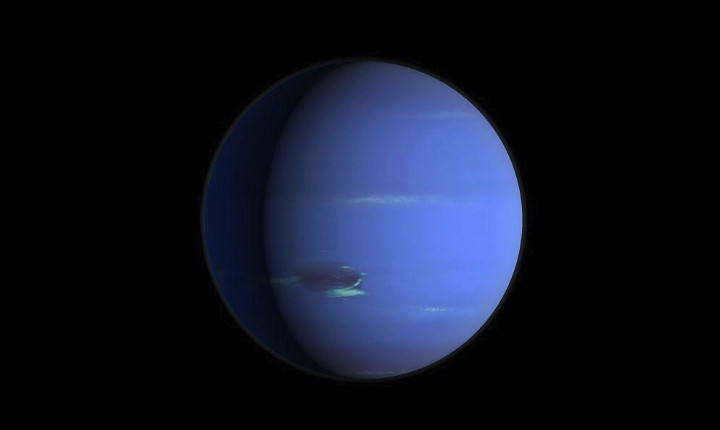
Small planets
In 2006, a new classification of planetary objects, including those in the Solar System, introduced the term “small planets”. This term emerged as a result of the discovery of numerous small planets beyond Neptune’s orbit in the early 21st century.
The International Astronomical Union reclassified Pluto, previously considered the most distant planet in the Solar System, as a small planet in 2006. This decision was made due to the discovery of many new Kuiper Belt objects that are similar in size to Pluto. The physical characteristics of Pluto are still not well understood. It has a retrograde rotation (similar to Uranus and Venus) with a period of 6 days, 9 hours, and 20 minutes.
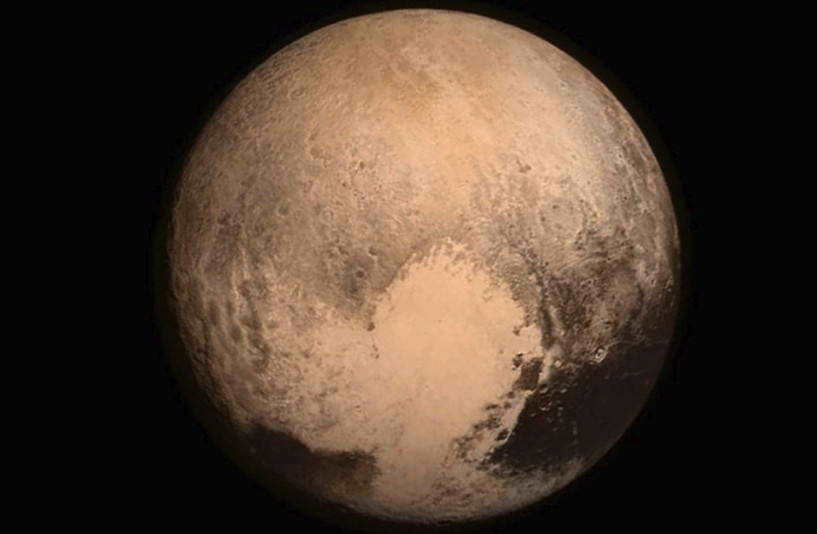
Pluto has an equatorial radius of 1500 km, which is approximately four times larger than Earth’s radius. Additionally, Pluto’s mass is significantly smaller than that of Earth. Scientists believe that like many of the large moons of giant planets, Pluto is primarily composed of frozen volatiles. Spectral analysis data has also indicated that Pluto’s surface is covered by a layer of methane ice.
In 1978, the first satellite of Pluto, named Charon, was discovered. Charon is located 17,000 km away from Pluto. Interestingly, Pluto and Charon constantly face each other, resulting in their periods of rotation around their respective axes and around each other being synchronized.
The dwarf planets exhibit complete rotational movements. However, unlike the already familiar 8 planets, they lack the ability to eliminate foreign objects from their orbits. Additionally, they possess significantly less mass compared to the major planets. As a result, they are not classified as major planets.
Our universe is boundless, and today we have gained knowledge about one of its tiny components – the solar system along with its primary representatives. Now you possess information regarding the number of planets comprising our solar system, their physical appearance, and their distinct characteristics. Lastly, we recommend viewing an intriguing video on the Solar System and the Universe.
In the late 16th century, the field of astronomy witnessed a confrontation between two contrasting models of our solar system: Ptolemy’s geocentric system, in which the Earth serves as the central point of rotation for all celestial bodies, and Copernicus’ heliocentric system, where the Sun takes on this pivotal role.
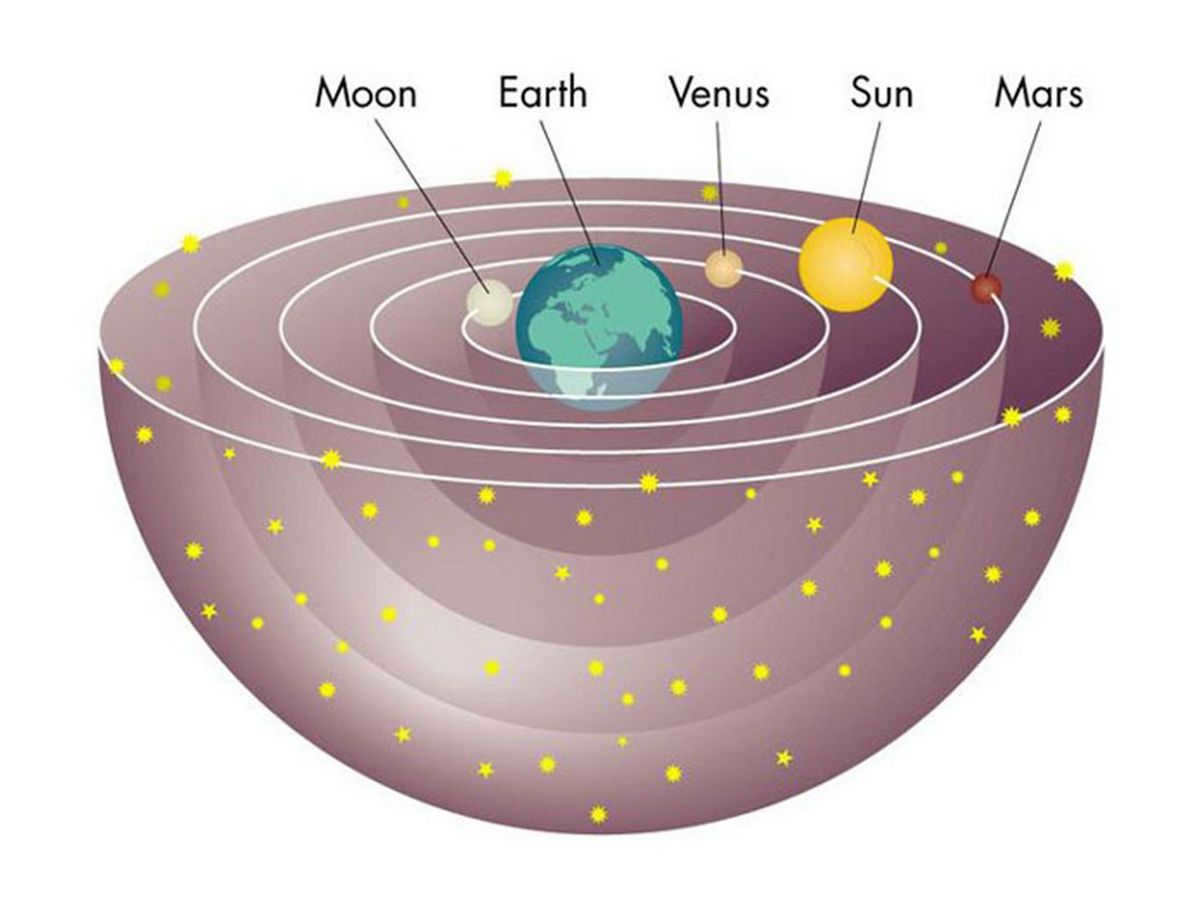

The model of the solar system by Claudius Ptolemy depicts the planets revolving around the Sun in circular orbits. Although this model had flaws, it was widely accepted at the time. However, Nicolaus Copernicus later proposed a more accurate model that placed the Sun at the center of the solar system. Despite its improvements, Copernicus’ model also had its shortcomings. One major flaw was its assumption of circular orbits, which was inconsistent with observations. To address this issue, Copernicus introduced the concept of epicycles, additional circular motion of the planets within their orbits around the Sun. While this correction partially resolved the discrepancies, it did not completely eliminate them.
Kepler’s First Law
Despite the efforts of the German astronomer to maintain the circular orbit of the planets, he was unable to reconcile this with the observed results. As a result, Kepler introduced the concept of elliptical orbits. Each elliptical orbit has two focal points, which are fixed points such that the sum of the distances from any point on the ellipse to these focal points remains constant.
Johannes Kepler observed that a planet follows an elliptical orbit around the Sun, with the Sun being located at one of the two focal points of the ellipse. This discovery became known as Kepler’s first law of planetary motion.
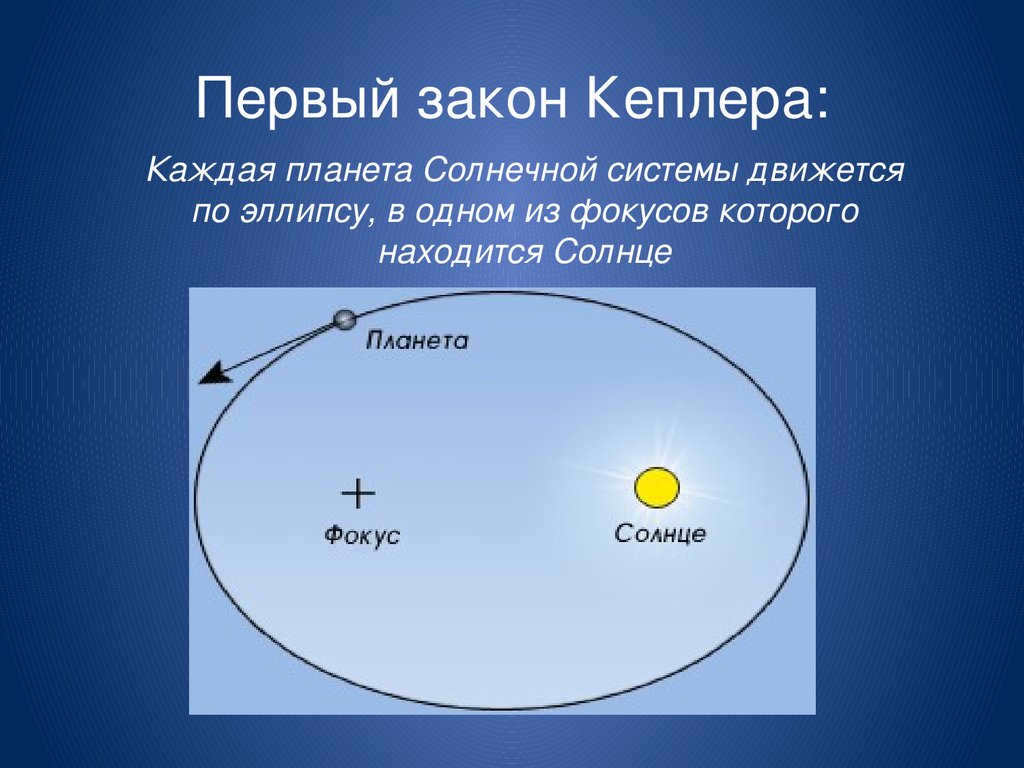

Kepler’s Second Law
Imagine a line connecting the Sun, which is positioned at one of the focal points of the planet’s elliptical orbit, to the planet. As the planet moves around the Sun, the line sweeps out equal areas on the plane in equal time intervals. This observation is known as the second law.
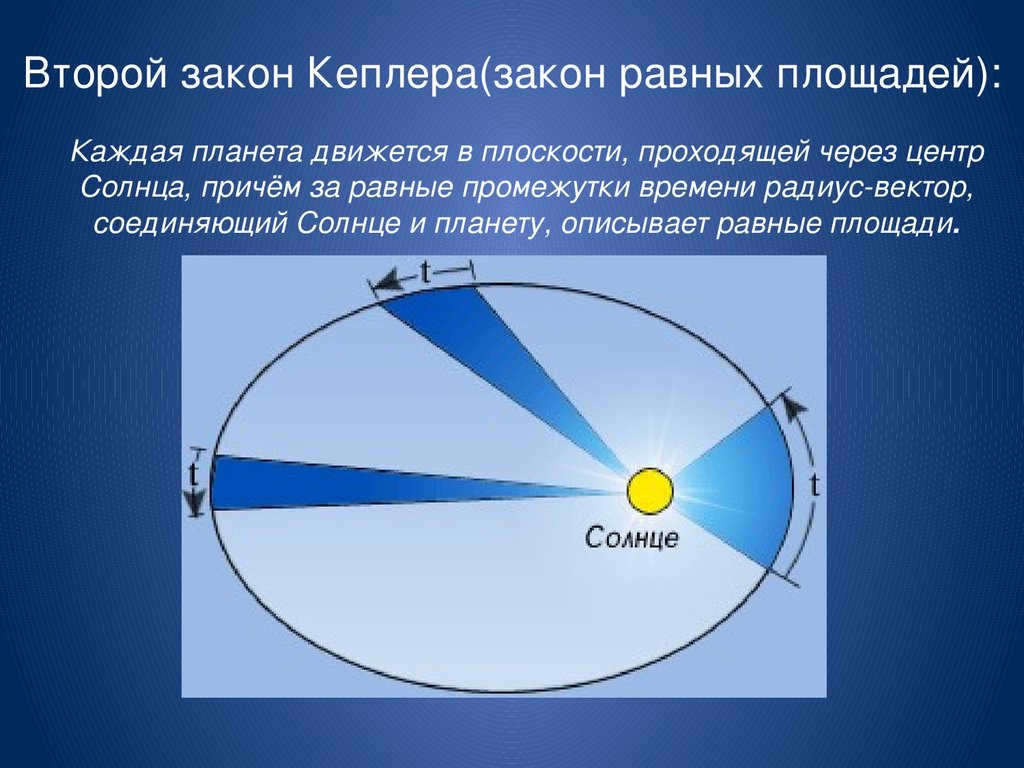

Kepler’s third law
Each planet’s orbit around the Sun has a point called perihelion, which is the closest point to the Sun. The point farthest from the Sun is called aphelion. The line that connects these two points is known as the major axis of the orbit. In astronomy, the major semi-axis is often used, which is obtained by dividing the major axis in half.
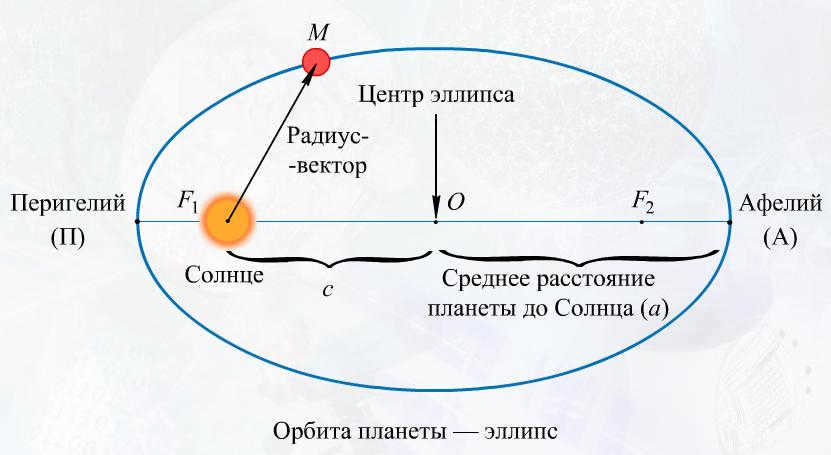
The fundamental components of an ellipse
Kepler’s third law of planetary motion can be stated as follows:
The ratio between the square of a planet’s revolution period around the Sun and the major semi-axis of its orbit remains constant, and is also equal to the ratio between the square of another planet’s revolution period around the Sun and the major semi-axis of its orbit.
Another equation that is sometimes expressed is:
